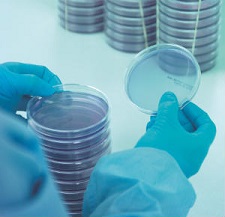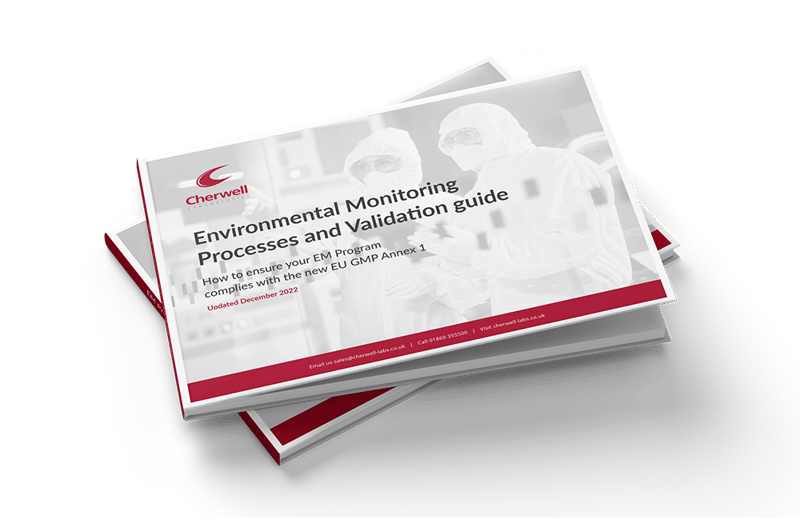We offer an insight into monitoring cleanrooms and reducing contamination risk within the pharmaceutical industry.
According to international standards, ISO 14644-1, cleanroom classifications fit within class 5 to class 8 and are based on the number of airborne particles of specified size per m3 air.
They are graded A – D by the MHRA Orange Guide (EU Guidance on GMP) based on similar particle ranges at rest and in use, with additional limits for microbial contamination in operation. The Orange Guide demands microbiological monitoring of air and surfaces in all four grades. It includes action and alert limits plus written procedures to prescribe corrective action if limits are exceeded.
The purpose of controlled environments and cleanrooms is to enable contamination control and limit the potential for contamination of products. For aseptic filling of sterile products in Grade A zones, the highest level of control and assurance is essential. Support areas and production areas for non-sterile or pre-sterilisation materials must also be controlled and monitored.
Managing zero CFU
In a perfect world, there would be no growth on all the environmental monitoring plates from Grade A and possibly zero, growth in Grade B. This will raise new concerns and questions for quality assurance and inspection. How do you know your monitoring is effective? Are the culture media and incubation conditions appropriate? How do you meet the quality control requirements for trending results if everything is zero?
Monitoring the adjacent Grade C & D areas and the ungraded external support will help, as any potential contaminant in the Grade A can only be introduced from outside. Monitoring these areas where moderate counts are allowed and expected, will enable the facility to establish the types of microflora commonly present in the local environment. It also enables the facility to highlight changes to the frequency or predominance of species close to the cleanroom.
This knowledge can be used to modify cleaning and disinfection routines and chemicals to address any potential rise in bioburden levels before they put the production or filling area at risk.
Fundamental monitoring considerations
There are many scholarly articles on methods, materials and sampling plans. The essential requirements and considerations include the following:
-
- The sampling method; air sampler, settle plate, contact plate, swab, rinse fluid, etc. should have acceptable collection efficiency.
- The culture medium must be able to support an appropriate range of microorganisms. If there are known inhibitory substances, such as disinfectant residues or antibiotics, the medium should contain effective neutralisers.
- The sample size should be consistent and reproducible. Surface samples, whether contact plate or swab, should be a known area; active air samplers and particle counters should be calibrated to deliver a known volume; settle plates should be exposed for a set time.
- Sample locations and frequency should be identified and chosen according to risk analysis, as well as regulatory requirements. This is relatively straightforward in high-risk aseptic process operations in grade A zones because there are well-documented expectations, as well as a requirement for an investigation into every breach of action limit. In Grade C/D and ungraded support areas, there is more scope for interpretation of expectations.
The essential requirement of microbiological monitoring is to demonstrate compliance with regulatory expectations. In many cases, it forms part of the batch release review process. The benefits can be much wider and contribute to the overall process improvement and risk reduction for both sterile and non-sterile products.
Routine surface and air samples in support areas after cleaning can reveal trends that might indicate a deficiency in the disinfection process. If particle counts increase or spore-forming bacteria are identified in a particular area the cleaning can be reviewed early. This means that sporicidal disinfection of this and any associated higher grade areas can be considered before any counts are found in the cleaner areas.
Similarly, if moulds are found on air plates or surface plates with no obvious source of contamination, it might be appropriate to sample outside this room using selective media. This will identify the source and enable targeted cleaning before particle concentration becomes a threat to the production area. This approach using different selective media can be employed for other objectionable organisms in the production of non-sterile products.
The appropriate performance and presentation of media are essential for confidence that it will detect an appropriate range of organisms and that it does not bring any risk of contamination into the cleanroom. Some on-site validation is necessary, although choosing a media supplier who understands microbiology, decontamination and air sampling will help.
A well-planned and implemented environmental monitoring (EM) programme is essential. Critical to ensuring an effective programme are considerations around how the cleanroom is designed and the integration of clean air devices to ensure that the air flow and air cleanliness lends itself to high regulatory standards. By producing trending data, an EM programme enables the proactive management of contamination issues before they become critical, which ultimately saves money and crucially ensures safer products.








